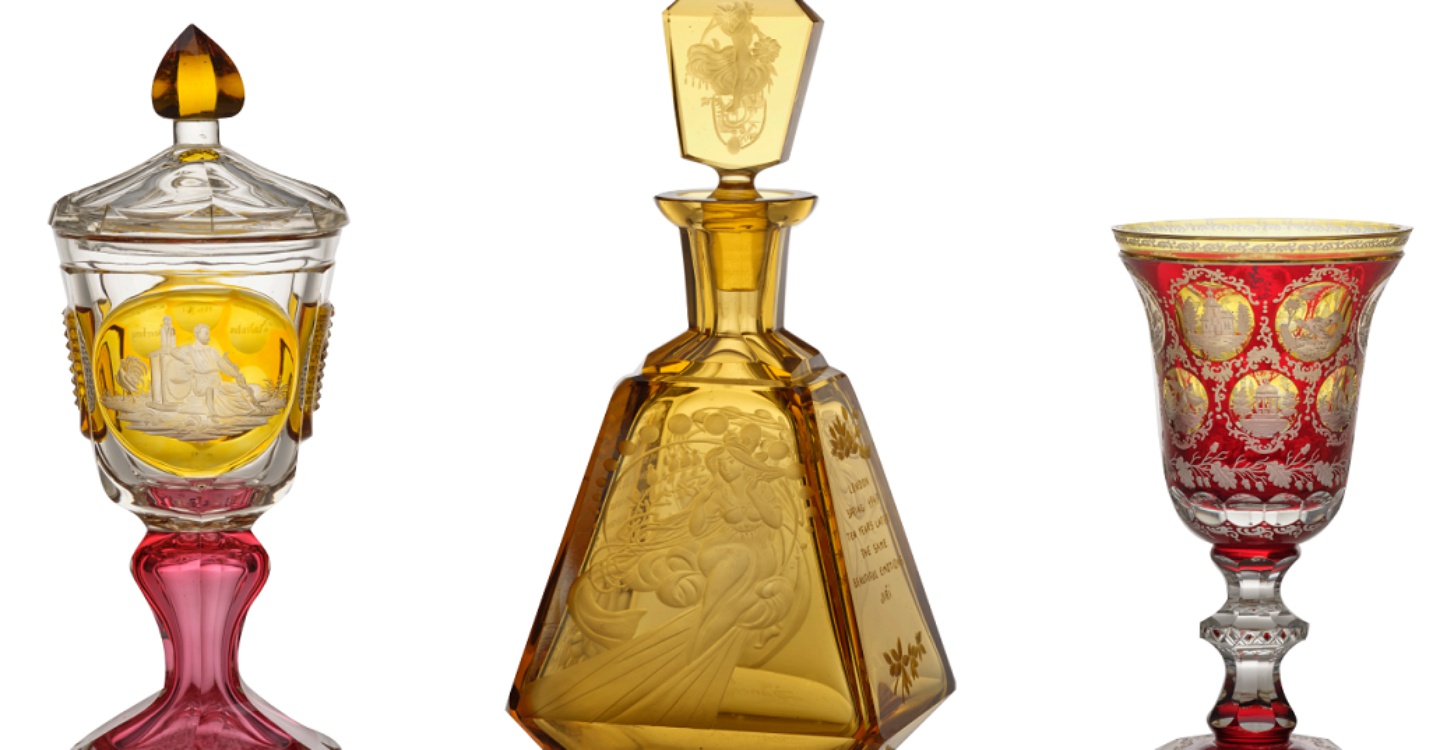Daily from 23 April to 15 May, 10 a.m. to 12.30 p.m. and 4 p.m. to 7.30 p.m.
Free entrance.
This exhibition is a "preview" of the review "Grado130", that will celebrate 130 years since the Austrian Emperor Franz Joseph proclaimed Grado as a Curative Resort spot, starting a success story that still lasts today. Through this exhibition, too, the aim is to highlight the importance of Grado as a pleasant meeting place for different nationalities and cultures: thanks to its history and to the many Middle European personalities who stayed and settled here, such as the Auchentaller couple, the island became a very popular destination for Austrians, Hungarians, Bohemians, Czechs and Germans.
The exhibition is curated by Antonio Voltolina, who will be displaying the most beautiful glass from his collection, which represents an accurate research of Bohemian Biedermeier glass art objects from different Eastern European countries.
The period between 1815 and 1850 is called Biedermeier after a character created by the satirical vein of Ludwig Eichrodt. The term is made up of the adjective "bieder" (simple) and the very common German surname "Meier", and is used to describe the educated bourgeois citizen, from a good family, vaguely sentimental, loyal to the law and to authority. This name soon became part of the common vocabulary and also took on a philosophical meaning, defining not only a historical period but also a way of life that exalted the familiar, intimate, everyday aspect and, as a result, gave the home and its furnishings greater meaning and value. Biedermeier glass, produced in Bohemian and Austrian workshops during the first half of the 19th century, featured a range of vivid and brilliant colours as never before seen in the history of glass, as well as elegant shapes and refined finishes. The technique of polychrome glass involves the addition to the mixture of unworked crystal and different metal oxides in order to obtain different shades of colour. The results are high quality colours: ruby red, copper or gold, cobalt blue, copper or chrome green, a wide variety of yellows from gold to amber to honey and the fluorescent uranium greens invented by the German Joseph Riedel between 1830 and 1848.
